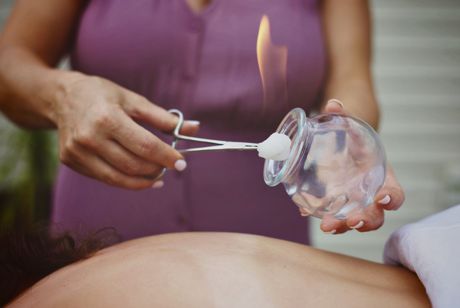Cupping
Cupping is a Chinese medicine technique that has been used for centuries for many different conditions, however, for people with needle fears, cupping on its own can offer a great alternative treatment.
During this process, glass, bamboo or silicone cups are placed on the skin, creating a vacuum-like seal. There are different techniques for creating this vacuum, including lighting an alcohol-soaked cotton ball inside the cup or attaching suction pumps to the end of the cups.
When the cups are placed on the skin, the superficial muscle layer is drawn up into the cup, which stimulates the circulation of blood, breaks up adhesions, and creates a pathway for toxins to be drawn out of the body through the lymphatic system. Cupping can affect tissues up to four inches deep-impacting blood vessels, fascia, muscles, and scar tissue.
Cupping decompresses adhesions and scar tissue, relaxes muscles in spasm, decreases trigger-point pain, and decreases tissue changes and inflammation following trauma. Cumulative treatments increase muscle endurance, circulation, and lymphatic drainage. They enhance a patients overall ability to recover from workouts and strenuous activity.
There are two types of popular cupping techniques, stationary and gliding cups. Stationary cups are where one or several cups are placed in the treatment zone for 5-10 minutes. Gliding cups are when a topical ointment or liniment is placed on the skin and then the cups are gently moved across the skin, usually along meridians or fascia/muscle planes.
Cupping often seems very pleasant, like a unique form of massage.
Cupping is different from massage in that with massage, the tissues are pressed, whereas cupping is the opposite, the tissues are pulled up. Cupping feels like a gentle suction is pulling away tension from tight and painful areas of the body.
Depending on the amount of suction and the state of the underlying tissues, cupping can leave circular marks on the skin that range from a light yellow to pinkish red to dark purple. From a TCM perspective, the darker the marks, the more stagnation of Qi and blood in that area. Stagnation leads to pain and dysfunction within tissues, so cupping-like acupuncture-aims to clear the stagnation before it causes problems.





